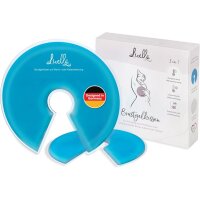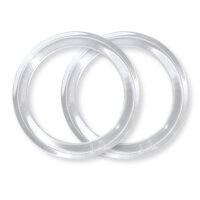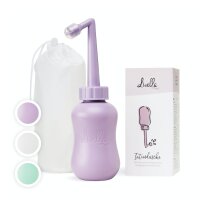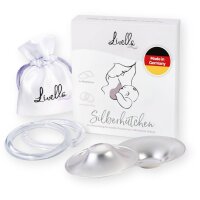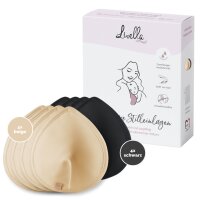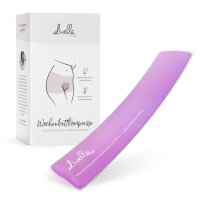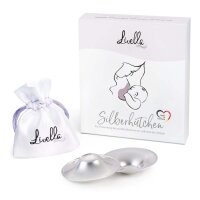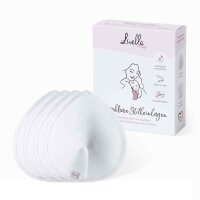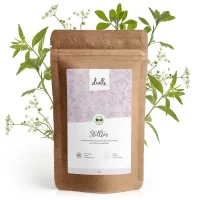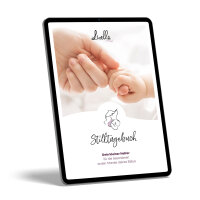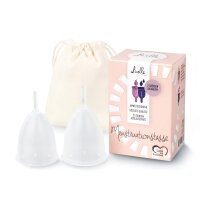The breast is engorged, some areas feel hard and warm, and putting the baby to the breast hurts. Many breastfeeding women know the discomfort caused by blocked milk ducts. And those who have been spared the unpleasant experience so far worry that they too may be affected in the near future.
Clogged milk ducts are among the most common breastfeeding problems new mums have to deal with. But what does a blocked milk duct look and feel like? How to get rid of a clogged milk duct? And is it possible to simply pump it out?
Table of Contents
What does a blocked milk duct look like?
What causes blocked milk ducts?
Can a blocked milk duct clear itself?

What does a blocked milk duct look like?
The milk ducts carry the breast milk from the alveoli to the nipple. If not drained properly during breastfeeding, they can clog up, which results in the surrounding area of the breast becoming tender, sore and swollen. The result is often a little lump in the breast tissue. In some cases, the area around the clogged milk duct might even be red or engorged so that the lump becomes visible.
What causes blocked milk ducts?
Milk ducts clog up when the breast isn’t drained properly. Insufficient drainage of the breast milk can have many different causes which are often linked to bad breastfeeding management that prevents the baby from emptying the breast properly during feeding sessions. This includes:
- Mother doesn’t breastfeed often enough
- Breastfeeding position isn’t done correctly
- Baby isn’t properly attached
- Additional pumping that leads to the body producing more milk than needed
Other factors that can favour a blockage of the milk ducts include:
- Initial engorgement of the breast that prevents the milk from flowing properly
- Sore nipples that lead to the breast not being emptied enough during feeding
- Oversupply of breast milk
- Wearing tight clothes and/or nursing bras
- Weak let-down reflex due to stress, lack of sleep or other psychological factors
We are often asked whether wearing our Livella Silver Nursing Cups applies pressure to the breast and can therefore cause milk ducts to clog up. But on this point, we can safely say that using silver nursing cups does not obstruct your milk flow, since the cups have an anatomical shape that is perfectly adapted to the size and form of the nipples. However, we recommend that you clear any blocked milk ducts before resuming the use of silver nursing cups—otherwise, wearing the cups might be uncomfortable.
Blocked milk duct symptoms
Blocked ducts are a common problem among breastfeeding mums. But especially first-time mothers are unsure about how to recognise a plugged milk duct. So, what does a blocked milk duct feel like?
The first sign that one of your milk ducts has clogged up is when an area of your breast starts to feel hard and tender. Usually, you will be able to feel a small lump. Redness and mild swelling may also occur in the affected area. The breast tissue may also feel warm to the touch.
What you should remember is that pain and complaints resulting from blockage of one of your milk ducts is restricted to the specific area and that it shouldn’t affect your overall state of health.
If you start feeling less energetic, experience severe pain, suffer from additional symptoms resembling a flu (e. g. headache, aching limbs etc.) and/or develop a fever (i. e. body temperature above 38.4°C), the blocked milk duct might have progressed to mastitis, which needs to be treated immediately.
So, to sum up the signs of a blocked milk duct:
- Small, tender lump in the breast
- Possible redness and swelling
- Breast tissue might feel warmer than usual
- Local pain
- Body temperature below 38.4°C
Blocked milk duct treatment
How to clear a blocked milk duct? That’s the first question breastfeeding mums ask as soon as they discover a sore lump in their breast and realise that their milk isn’t moving freely anymore. Here are a few things you can do to get your milk flow back on track.
- Get some rest: Insufficient milk flow can also be the result of too much stress, or it might be a sign that you’re doing too much. If the milk ducts clog up due to stress, it usually helps if you take a little time out.
- Keep breastfeeding with the affected breast: Even if it’s the last thing you want to do, you have to continue putting your baby to the affected breast. If latch-on is very painful, you can start with the non-affected breast and then switch to the other side once your let-down reflex has kicked in.
- Check that your baby latches on properly: Only if your baby is properly attached, can he or she suck effectively to clear the blockage in your milk duct. Ideally, his or her chin is pointed towards the area around the blocked duct so that this part of the breast gets drained during feeding.
- Apply warmth to the affected area: Warmth can help widen the milk ducts and stimulate milk flow, which makes it easier to release any blockages. There are special breast gel pads that are anatomically adapted to the form of your breast to simplify application. Alternatively, you can use warm compresses.
- Gently massage your breast: A breast massage can be helpful to remove a blockage in the milk ducts—especially since it also helps stimulate the let-down reflex. You can begin massaging your breast before the feeding session and even continue massaging while your little one is feeding. Start massaging the breast tissue in the area of the lump and work your way towards the nipple.
- Cool your breast after feeding: Breastfeeding with a clogged milk duct can be painful, and many women that suffer from this breastfeeding problem wonder how to relieve a blocked milk duct. Applying a cool breast gel pad can provide relief after each feeding session.
- Change breastfeeding positions: When suffering from a plugged milk duct, changing breastfeeding positions regularly can help drain milk from all areas of the breast. Express milk after breastfeeding: If your breasts still feel uncomfortably full after feeding, you can additionally express the breast by hand afterwards to fully drain it.

Can a blocked milk duct clear itself?
Just as many other pains and health problems, clogged milk ducts do not fix themselves. On the contrary. Without treatment, a blocked milk duct can turn into mastitis, which is an inflammation of the breast that either stems from insufficient milk drainage or a bacterial infection of the breast tissue. Mastitis is very painful and should therefore be avoided at all costs—hence the need to clear any blockage in the milk ducts as soon as they occur.
How to prevent clogged milk ducts?
Prevention is often the best treatment. This also holds true for blocked milk ducts. Luckily, many of the techniques that are used for relieving a clogged milk duct can also be used as preventative measures. Here are a few tips on how to prevent your milk ducts from clogging up in the first place:
- Wear well-fitted clothing: Since wearing a too-tight nursing bra or other clothing items that apply pressure to the breast can lead to problems with the milk flow, a good measure to prevent this is to wear loose clothing and a well-fitted nursing bra.
- Don’t overdo it: Instead of waiting until it’s too late, you should integrate regular breaks into your daily schedule to give your body some much needed rest from the additional strain that is breastfeeding.
- Breastfeed as often as possible: To prevent the breast from becoming too full with new milk, you should breastfeed regularly and never skip a feed. This also means not waiting too long between feedings. As a rule of thumb, try to breastfeed at least 8 times in 24 hours.
- Try not to sleep on your stomach: Sleeping on your stomach compresses your breast at night, which can cause milk ducts to clog up. Therefore, this sleeping position is best avoided. Examine your breast regularly: Checking your breasts on an ongoing basis can help discover tender spots or lumps early on and allows you to take action promptly. The earlier you spot a clogged milk duct, the easier it is to remove the blockage.
- Always pay attention to positioning and attachment: A good latch is the best way to prevent clogged milk ducts. If your baby is attached properly, he or she will be able to drain the breast completely, which means that there is no chance for leftover milk to obstruct your milk ducts.
Blocked milk ducts: When to seek professional help?
Clogged milk ducts are very common. Untreated, they can lead to more severe health conditions like mastitis, which is why they should be treated as soon as possible. With the tips we’ve shared in this blog post, you should be able to get rid of a blocked milk duct. But if the problem persists, you should seek help from a midwife or a lactation consultant—if you need help finding a breastfeeding expert, you can reach out to the NHS. If need be, they will refer you to a doctor who can run some tests and discuss further treatment.
It’s also important to get professional support if you:
- Feel like your condition is worsening despite taking measures to clear the blocked duct (e. g. the lump in your breast keeps getting bigger or your temperature rises above 38.4°C).
- Suffer from clogged milk ducts frequently.
- Don’t see any improvement after 24 hours.
References
- gf713 1202..1208 (thieme-connect.com)
- Breast pain and breastfeeding - NHS (www.nhs.uk)
- Common breastfeeding challenges | Office on Women's Health (womenshealth.gov)
- Clogged Milk Ducts - HealthyChildren.org
- Mastitis and Sore Breasts - La Leche League International (llli.org)
- Mastitis, Slowed Milk Flow, and Milk Blisters - La Leche League USA (lllusa.org)
- Blocked milk ducts and mastitis fact sheet | Children’s Health Queensland
- Mastitis - La Leche League GB
- Blocked milk ducts | Baby & toddler, Feeding articles & support | NCT


